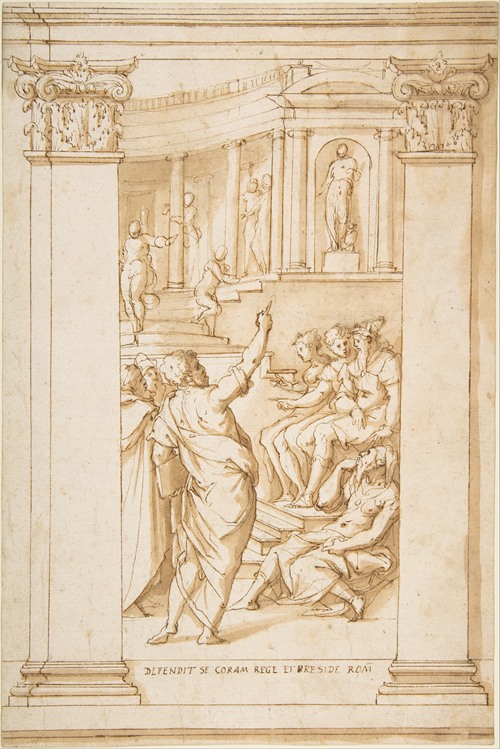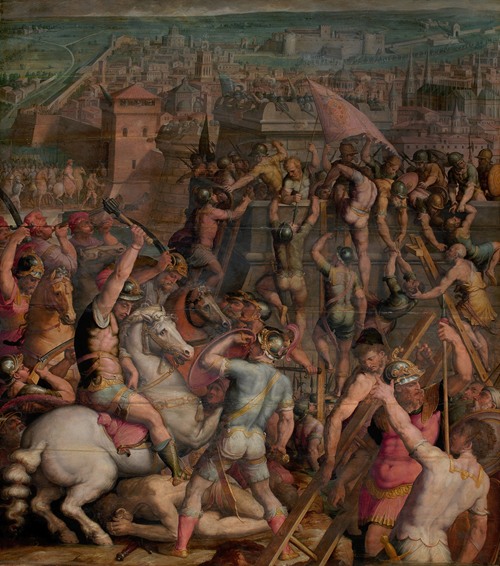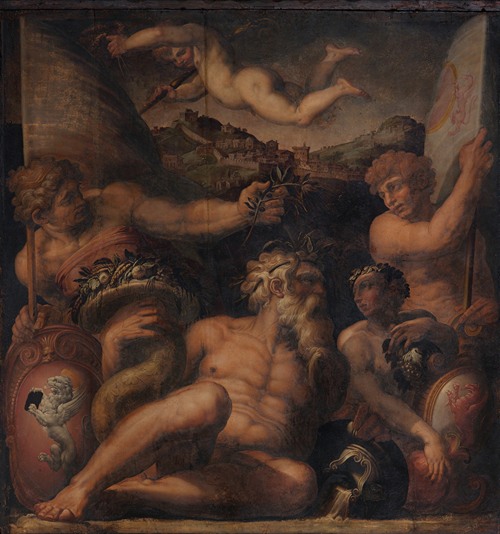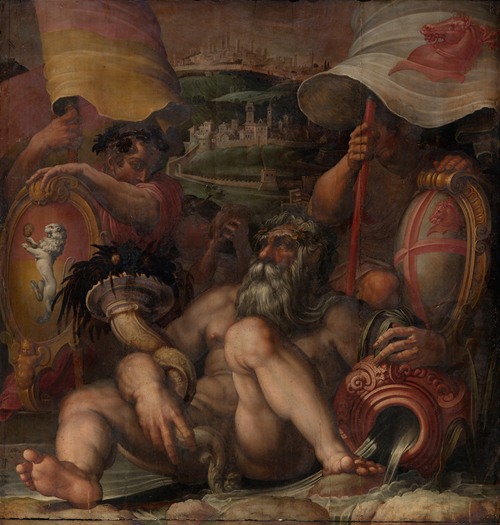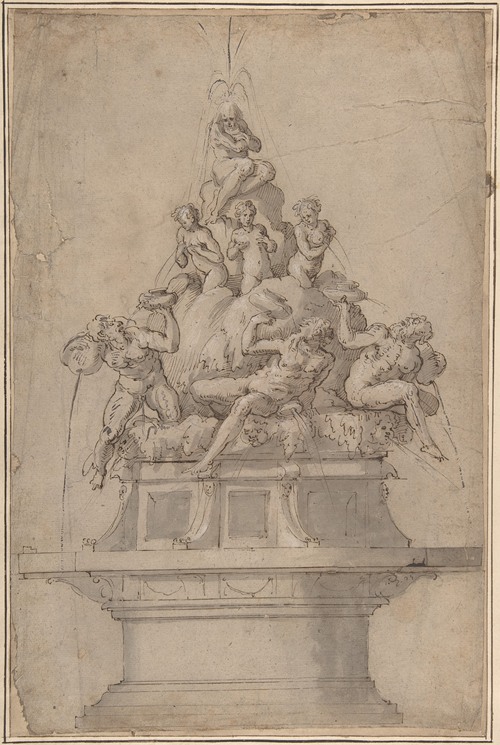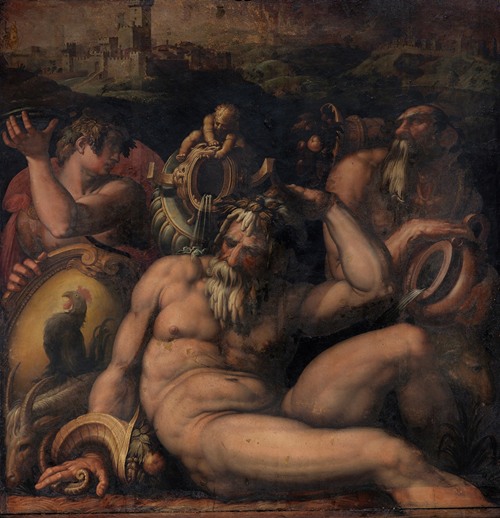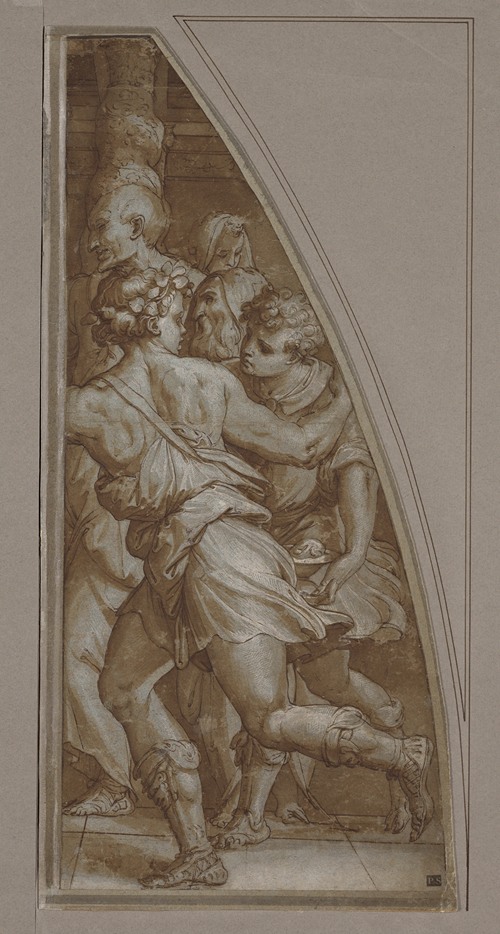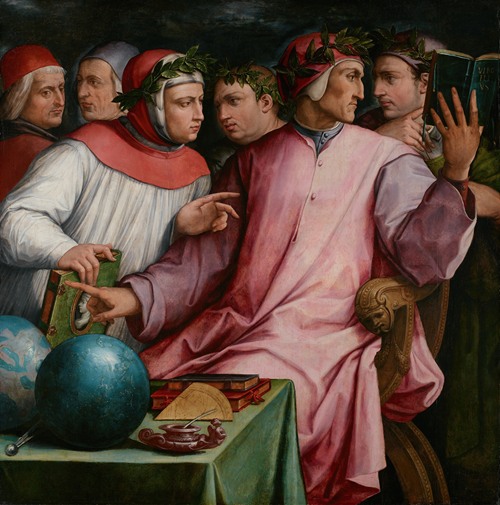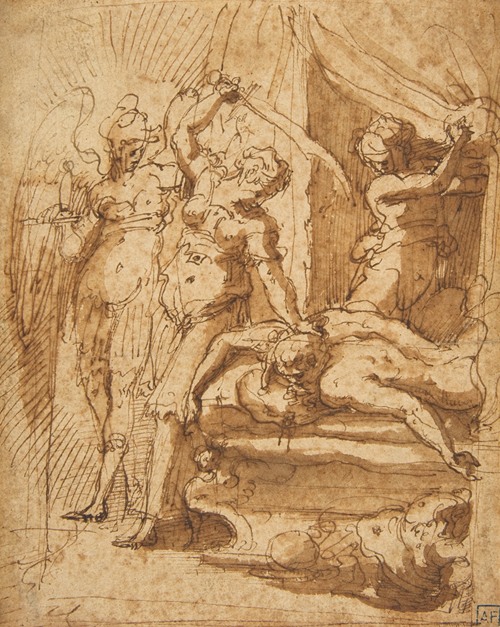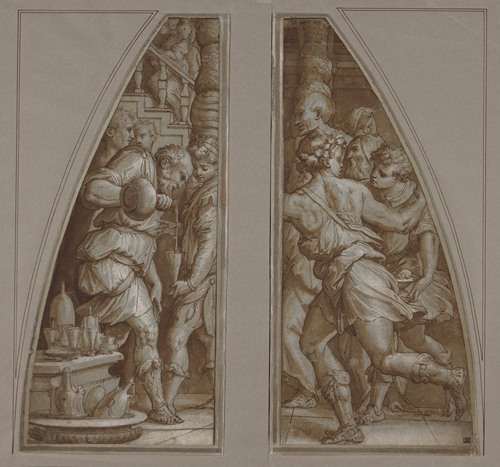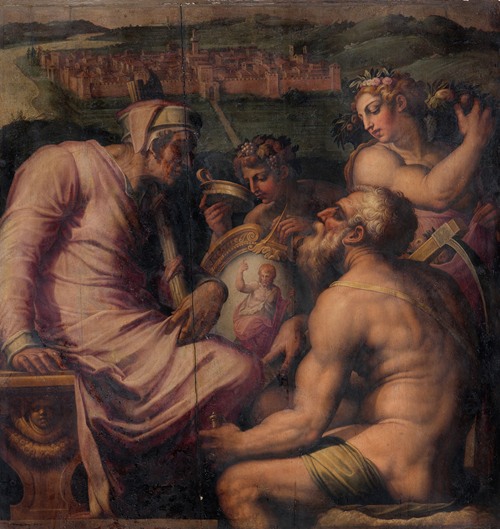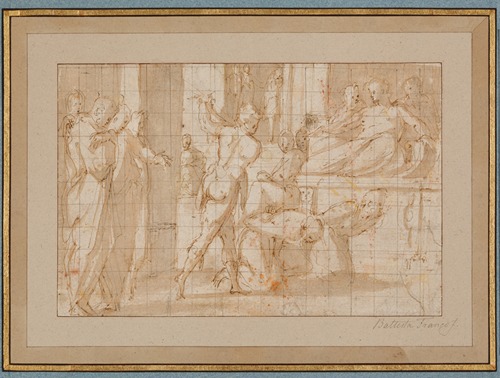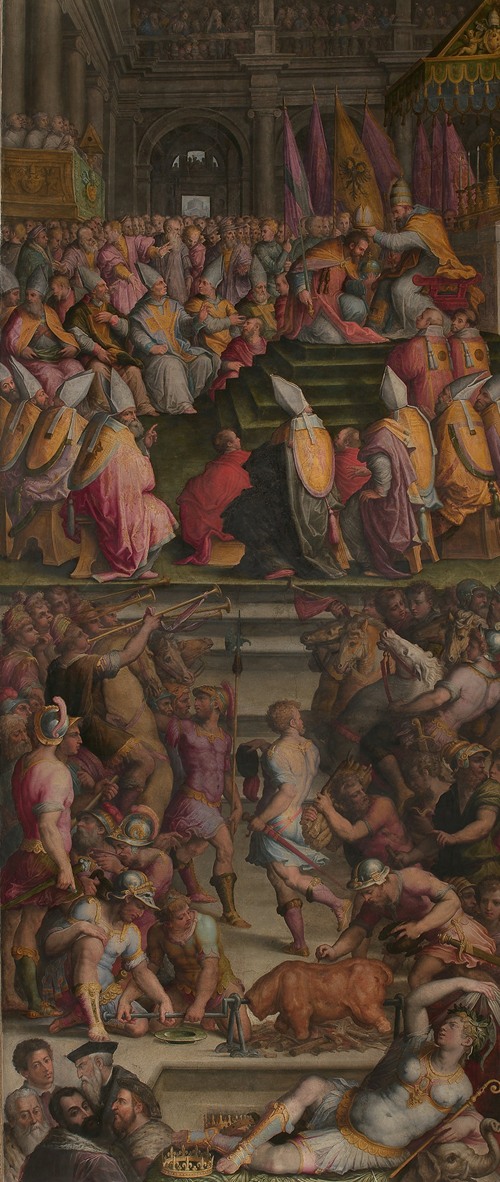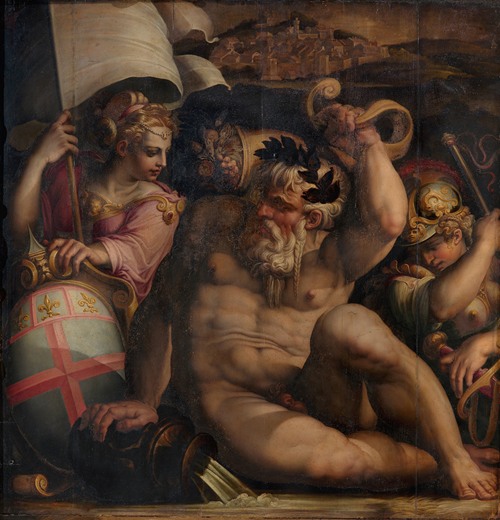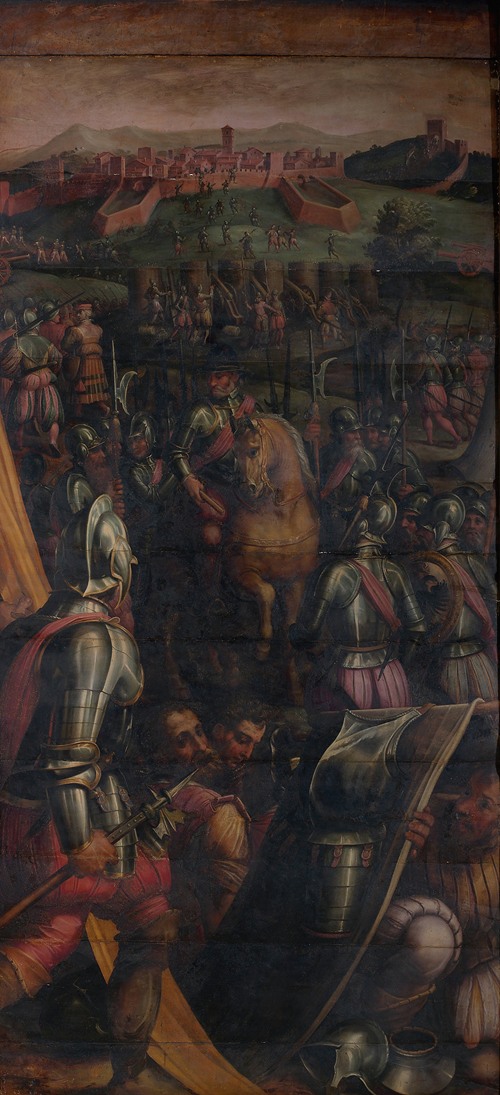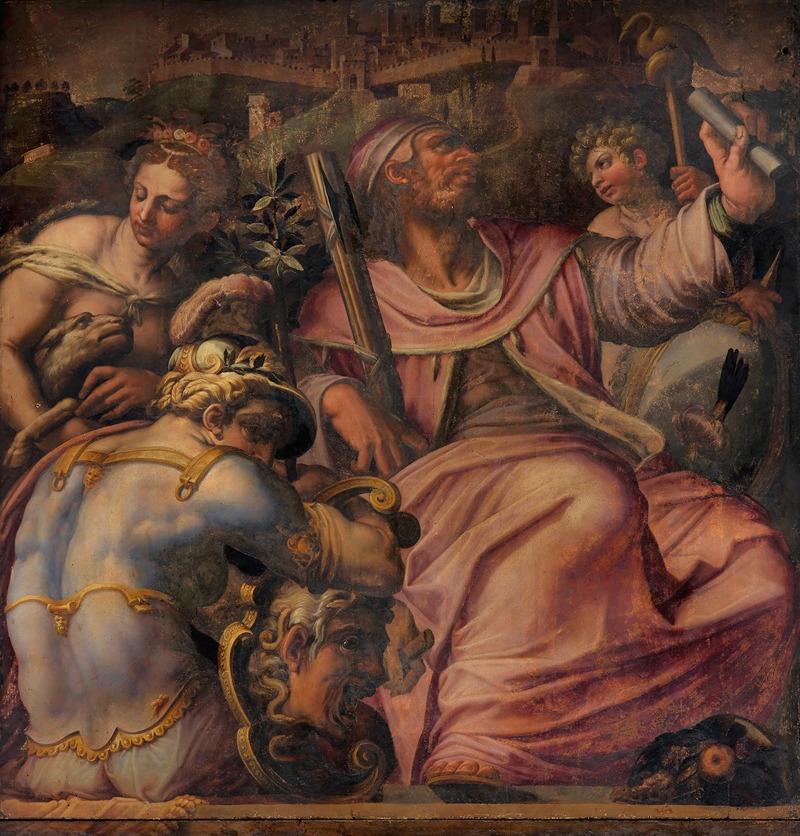
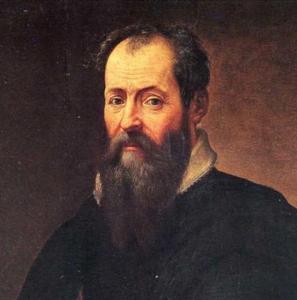
Giorgio Vasari was an Italian painter, architect, engineer, writer, and historian, best known for his Lives of the Most Excellent Painters, Sculptors, and Architects, considered the ideological foundation of art-historical writing. Based on Vasari's text about Giotto's new manner of painting, Jules Michelet suggested for the first time the term Renaissance in his Histoire de France (1835), a term adopted by historiography and still in use today.
Vasari was born prematurely on 30 July 1511 in Arezzo, Tuscany. Recommended at an early age by his cousin Luca Signorelli, he became a pupil of Guglielmo da Marsiglia, a skillful painter of stained glass. Sent to Florence at the age of sixteen by Cardinal Silvio Passerini, he joined the circle of Andrea del Sarto and his pupils Rosso Fiorentino and Jacopo Pontormo, where his humanist education was encouraged. He was befriended by Michelangelo, whose painting style would influence his own. He died on 27 June 1574 in Florence, Grand Duchy of Tuscany, aged 62.
In 1529, he visited Rome where he studied the works of Raphael and other artists of the Roman High Renaissance. Vasari's own Mannerist paintings were more admired in his lifetime than afterwards. In 1547 he completed the hall of the chancery in Palazzo della Cancelleria in Rome with frescoes that received the name Sala dei Cento Giorni. He was consistently employed by members of the Medici family in Florence and Rome, and worked in Naples (for example on the Vasari Sacristy), Arezzo and other places. Many of his pictures still exist, the most important being the wall and ceiling paintings in the Sala di Cosimo I in the Palazzo Vecchio in Florence, where he and his assistants were at work from 1555, and the frescoes begun by him inside the vast cupola of the Duomo were completed by Federico Zuccari and with the help of Giovanni Balducci. He also helped to organize the decoration of the Studiolo, now reassembled in the Palazzo Vecchio.
In Rome he painted frescos in the Sala Regia.
Aside from his career as a painter, Vasari was also successful as an architect. His loggia of the Palazzo degli Uffizi by the Arno opens up the vista at the far end of its long narrow courtyard. It is a unique piece of urban planning that functions as a public piazza, and which, if considered as a short street, is unique as a Renaissance street with a unified architectural treatment. The view of the Loggia from the Arno reveals that, with the Vasari Corridor, it is one of very few structures that line the river which are open to the river itself and appear to embrace the riverside environment.
In Florence, Vasari also built the long passage, now called Vasari Corridor, which connects the Uffizi with the Palazzo Pitti on the other side of the river. The enclosed corridor passes alongside the River Arno on an arcade, crosses the Ponte Vecchio and winds around the exterior of several buildings. It was once the home of the Mercado de Vecchio.
He also renovated the medieval churches of Santa Maria Novella and Santa Croce. At both he removed the original rood screen and loft, and remodelled the retro-choirs in the Mannerist taste of his time. In Santa Croce, he was responsible for the painting of The Adoration of the Magi which was commissioned by Pope Pius V in 1566 and completed in February 1567. It was recently restored, before being put on exhibition in 2011 in Rome and in Naples. Eventually it is planned to return it to the church of Santa Croce in Bosco Marengo (Province of Alessandria, Piedmont).
In 1562 Vasari built the octagonal dome on the Basilica of Our Lady of Humility in Pistoia, an important example of high Renaissance architecture.
In Rome, Vasari worked with Giacomo Barozzi da Vignola and Bartolomeo Ammannati at Pope Julius III's Villa Giulia.
Often called "the first art historian", Vasari invented the genre of the encyclopedia of artistic biographies with his Le Vite de' più eccellenti pittori, scultori, ed architettori (Lives of the Most Eminent Painters, Sculptors, and Architects), dedicated to Grand Duke Cosimo I de' Medici, which was first published in 1550. He was the first to use the term "Renaissance" (rinascita) in print – though an awareness of the ongoing "rebirth" in the arts had been in the air since the time of Alberti – and was responsible for the modern use of the term Gothic art, though he only used the word Goth which he associated with the "barbaric" German style. The Lives also included a novel treatise on the technical methods employed in the arts. The book was partly rewritten and enlarged in 1568, with the addition of woodcut portraits of artists (some conjectural).
The work has a consistent and notorious bias in favour of Florentines, and tends to attribute to them all the developments in Renaissance art – for example, the invention of engraving. Venetian art in particular (along with arts from other parts of Europe), is systematically ignored in the first edition. Between the first and second editions, Vasari visited Venice and while the second edition gave more attention to Venetian art (finally including Titian), it did so without achieving a neutral point of view. There are also many inaccuracies within his Lives. For example, Vasari writes that Andrea del Castagno killed Domenico Veneziano, which is not true, given Andrea died several years before Domenico. In another example, Vasari's biography of Giovanni Antonio Bazzi, whom he calls "Il Soddoma," published only in the Lives' second edition (1568) after Bazzi's death, condemns the artist as being immoral, bestial, and vain. Vasari also dismisses Bazzi's work as being lazy and offensive, despite the artist's having been named a Cavaliere di Cristo by Pope Leo X and having received important commissions for the Villa Farnese and other sites.
Vasari enjoyed high repute during his lifetime and amassed a considerable fortune. In 1547, he built himself a fine house in Arezzo (now a museum honouring him), and decorated its walls and vaults with paintings. He was elected to the municipal council of his native town, and finally rose to the supreme office of gonfaloniere. He was made Knight of the Golden Spur by the Pope. He married Niccolosa Bacci, a member of one the richest and most prominent families of Arezzo.
In 1563, he helped found the Florentine Accademia e Compagnia delle Arti del Disegno, with the Grand Duke and Michelangelo as capi of the institution and 36 artists chosen as members.
